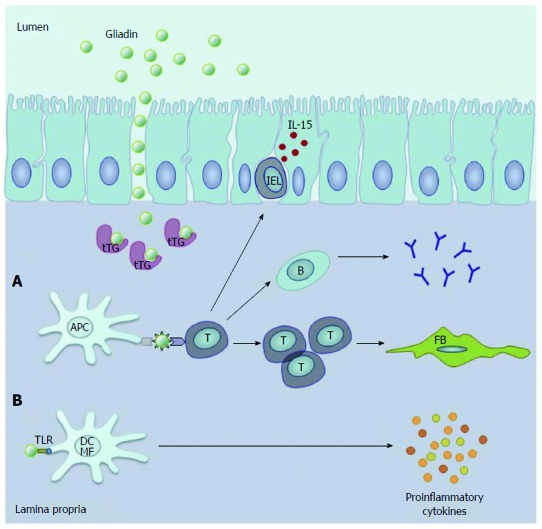Figure 1.

Key processes during the pathogenesis of coeliac disease. In the lamina propria. A: Gluten-derived gliadin peptides deamidated by tissue transglutaminase (tTG) are presented to T-cells by antigen presenting cells (APC). This process leads to the activation of anti-gliadin and anti-tTG antibody producing B-cells and other T-cells promoting the activation of intestinal fibroblasts (FB). Furthermore, gliadin enhances the production of IL-15, which activates intraepithelial T lymphocytes (IEL); B: Gliadin peptides can directly activate Toll-like receptor (TLR) 2 and 4 on macrophages (MF) and dendritic cells (DC), resulting in increased production of proinflammatory cytokines (Reproduced with permission from Sziksz et al[1]).
